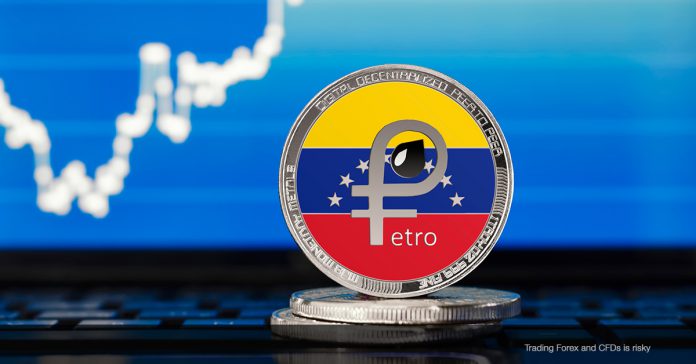The leadership of Nicolas Maduro has been questioned lately, as the opposition leader, Juan Guaidó, has declared himself as interim president. This claim has the backing of the US, the EU, and the Lima group (excluding Uruguay and Mexico), which constitutes of the major countries in Latin America, and was formed to examine solutions for the Venezuelan crisis.
The decline in Venezuelan standards of living, combined with its continuous decline in oil output has been phenomenal: production currently stands at approximately 1 million barrels per day, a more than 70% reduction since the Hugo Chavez days where production stood close to 3.5 million barrels per day, and the lowest level since the 1940s. As a result, crude oil imports of Venezuelan oil by China, India, and most notably the US, have plummeted.
The problem of experiencing production cuts, with production seen by some sources to be able to decline to as low as 700,000 barrels per day, is that, as in all other developing nations (with China standing out as a prominent example), the country heavily depends on foreign inflows to sustain itself. As oil exports decline, Venezuela faces more and more difficulties pertaining to sustaining even the essentials for its citizens: a recent survey has found that 85% of drugs were either impossible or difficult to find, with malaria incidents increasing by 69% in 2017 as a result.
The drop in oil price production, the near-depletion of foreign reserves as a result of trying to support a falling currency, and the expected 18% contraction in the economy over the course of the previous year due to the fact that foreign companies have been fleeing the country as a result of corruption, have taken their toll. Venezuelans appear to have rejected their currency which, after Maduro’s changes, saw a devaluation of 95% in August, the removal of five zeros from its measurement, and its peg on a newly-introduced government cryptocurrency called “petro” (which would in turn be linked to oil prices). The confusion caused by all of the above made the overall situation take a turn for the worse instead of improving. As a result, the price of imports skyrocketed, resulting in the shortages mentioned above. Hyperinflation is still raging: the IMF estimated that prices have grown by about 1.4 million percent in 2018, meaning that they double approximately every 25 days. The forecast for 2019 suggests a growth rate of 10 million percent, suggesting that prices would double approximately every 20 days. This would place it 30th on the list of the top hyperinflation periods of all time.
Despite the decline in oil production over time, Oil prices do not appear to have been affected: Oil prices declined significantly in 2018, partly as a result of higher production by Russia and Saudi Arabia and partly as an outcome of higher US shale oil production. Despite the increase in shale oil, most of it is domestically consumed and transported by trains and lorries which are much more fuel efficient than supertankers, thus depriving the Oil industry of an important demand driver: the number of vessels carrying Venezuelan crude oil has declined by 20% in the past two years.
At the moment, Venezuela’s gradual decline of oil production has made it too small to impact the world price. Even inthe event of a total collapse of production the effect will mostly be psychological, as Venezuela currently accounts for, at best, about 1.3% of the world’s total crude oil. About 25% of the production was used for domestic purposes back in 2017, and as this share will likely increase as production declines, the fact is that Venezuelan exports are likely to matter even less in the future.
Consequently, it is likely that Oil prices will not react to a further tightening of production by Venezuela, as they appear to have had enough time to digest and discount any potential supply disruptions from the country into the price. Any major piece of news regarding further production slowdowns is expected to have more of a psychological rather than an actual effect on Oil, thus making the impact transitory. On the other hand, market expectations are not well-positioned for a spike in Venezuelan production; while this is not likely to take place if Maduro continues to reign the country, it could be the case that if he is replaced by Guaidó, something which could be perceived by the markets as increasing the world supply of crude oil.
However, the status quo is likely to be maintained as long as Maduro remains at the helm and maintains military support. Still, as allegiances do tend to change with the assistance of powerful incentives, it should not be ruled out as a possibility for 2019.
Click here to access the HotForex Economic Calendar
Dr Nektarios Michail
Market Analyst
HotForex
Disclaimer: This material is provided as a general marketing communication for information purposes only and does not constitute an independent investment research. Nothing in this communication contains, or should be considered as containing, an investment advice or an investment recommendation or a solicitation for the purpose of buying or selling of any financial instrument. All information provided is gathered from reputable sources and any information containing an indication of past performance is not a guarantee or reliable indicator of future performance. Users acknowledge that any investment in FX and CFDs products is characterized by a certain degree of uncertainty and that any investment of this nature involves a high level of risk for which the users are solely responsible and liable. We assume no liability for any loss arising from any investment made based on the information provided in this communication. This communication must not be reproduced or further distributed without our prior written permission.




















